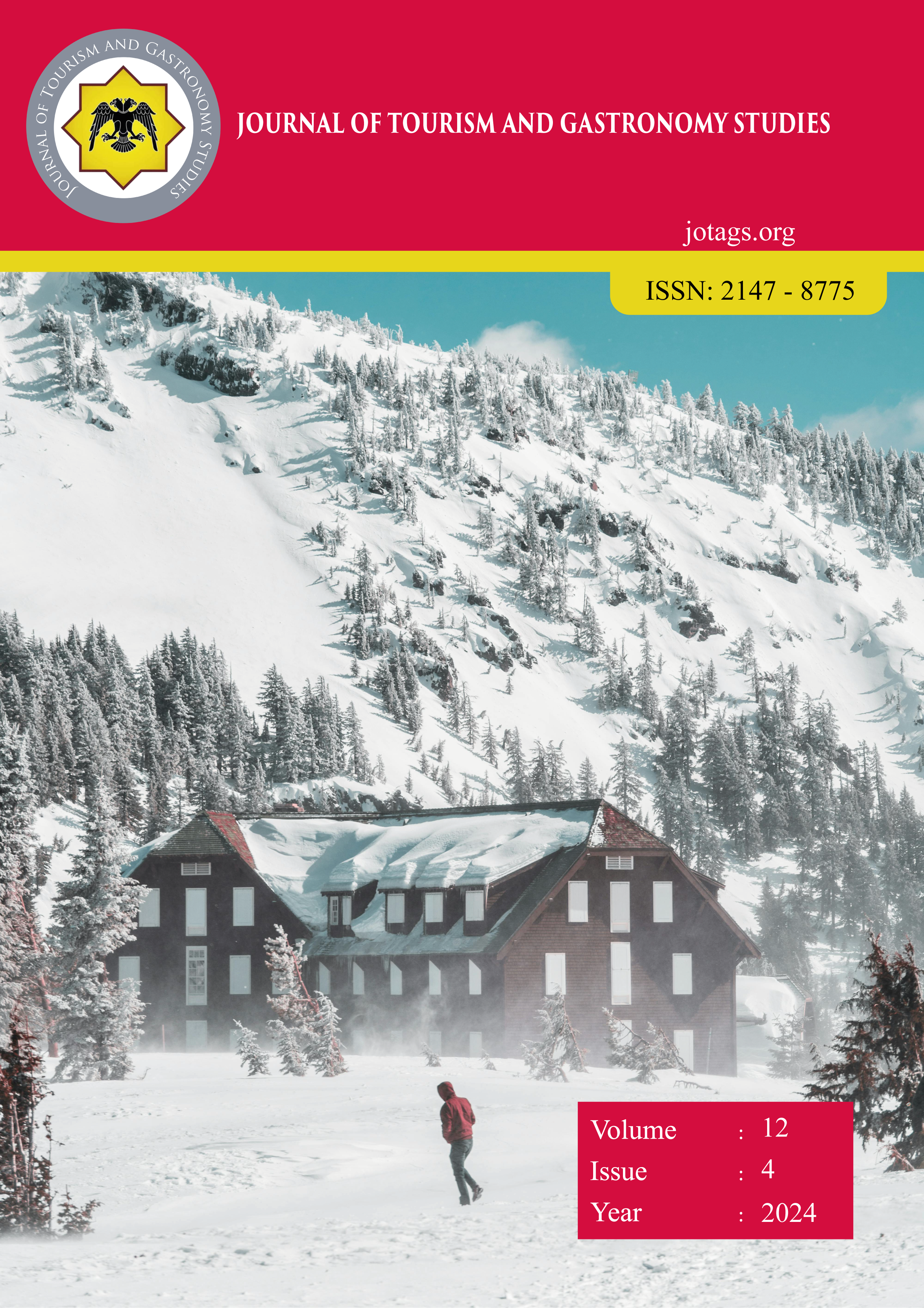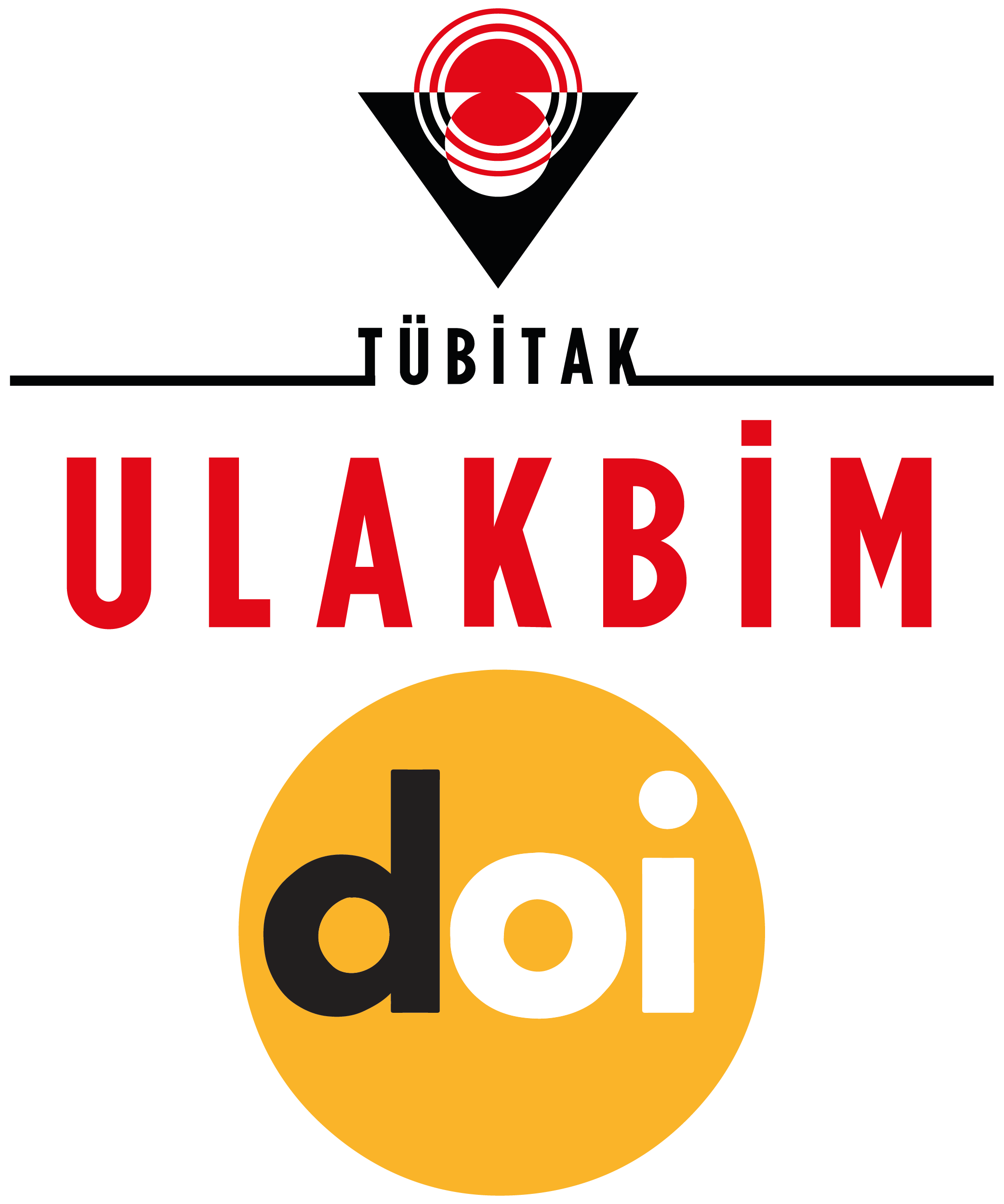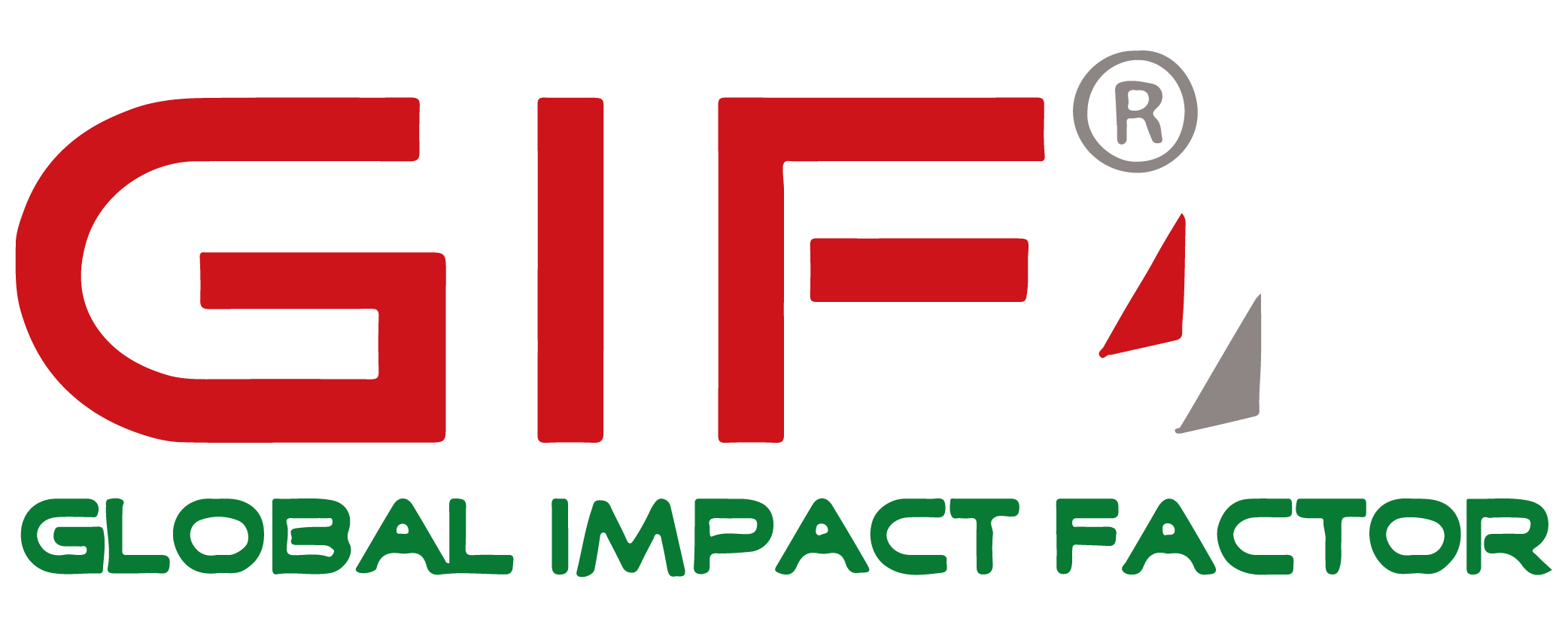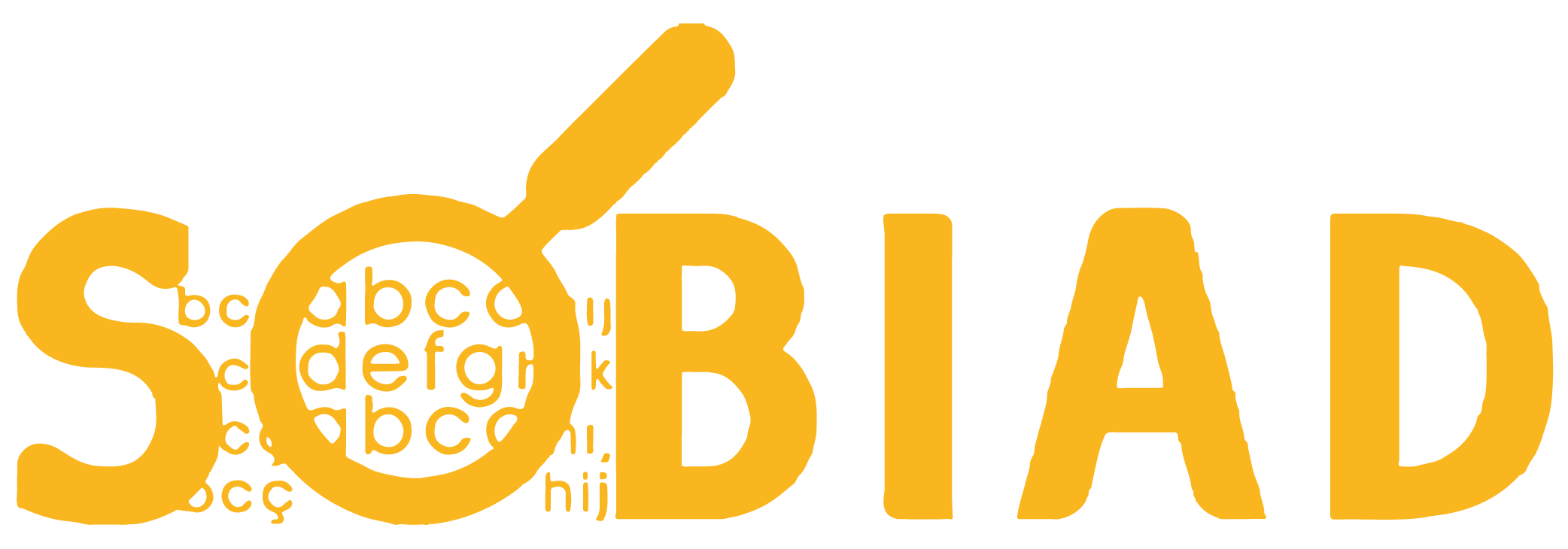Aybastı’nın Yenilebilir Mantarları ve Mutfakta Kullanım Alanlarının Belirlenmesi (Determinatıon of Edible Mushrooms in Aybastı and Their Culinary Uses)
DOI:
https://doi.org/10.21325/jotags.2024.1503Keywords:
Edible mushrooms, Wild mushrooms, Culinary use, AybastıAbstract
The mushroom diversity of Aybastı creates an important potential for gastronomy tourism by enriching the original dishes of the local cuisine. In this research, it is thought that the examination and promotion of edible mushrooms in Aybastı will contribute to the local economy as well as helping to protect cultural heritage. The aim of this research is to identify and record the edible mushrooms that grow naturally in Aybastı district and to determine their usage in meals. Interview technique, one of the qualitative research methods, was used in the research, and the interviews were recorded by obtaining permission from the participants and this interview lasted approximately 20 to 40 minutes. Data were collected between May 18, 2024 and June 10, 2024. Descriptive and content analysis were used to analyze the data in order to guide future studies and guide researchers. Thanks to this research, 11 mushroom species that are important in terms of gastronomy potential have been identified.
References
Ahmed, A. F., Mahmoud, G. A.-E., Hefzy, M., Liu, Z. & Ma, C. (2023). Overview on the edible mushrooms in Egypt. Journal of Future Foods, 3(1), 8-15.
Altunışık, Remzi. (2023). Örnekleme ve Örnekleme Süreci. Altunışık, R., Boz, H., Gegez, E., Koç, E., Sığrı, Ü., Yıldız, E., Yüksel, A., (Ed.). Sosyal Bilimlerde Araştırma Yöntemleri: Yeni Perspektifler. Ankara: Seçkin Yayıncılık, 2023. 129-184.
Aida, F., Shuhaimi, M., Yazid, M. & Maaruf, A. (2009). Mushroom as a potential source of prebiotics: A review. Trends in Food Science ve Technology, 20(11-12), 567-575.
aybasti.bel.tr. aybasti.bel.tr/sayfa/ilcenin-cografyasi. Erişim tarihi: 20.04.2024.
Bahar, O., Özdemir, Ö. & Akyürek, S. (2020). Yeşilüzümlü kuzugöbeği mantar ve Dastar Festivali’nin kırsal kalkınma ve kültürel değerler üzerindeki rolü. Sosyal ve Beşeri Bilimler Araştırmaları Dergisi, 21(46), 131-159.
Bekar, A., Kocatürk, E. & Sürücü, Ç. (2017). Gastronomi festivallerinin algılanan destinasyon imajına ve tekrar ziyaret etme niyetine etkisi: Fethiye yeşilüzümlü ve yöresi kuzugöbeği mantar festivali örneği. Journal of Tourism ve Gastronomy Studies, 5(Special Issue 2), 28-36.
Bello-Cervantes, E., Correa-Metrio, A., Montoya, A., Trejo, I. & Blanco, J. C. (2019). Variation of ethnomycological knowledge in a community from Central Mexico. Journal of Fungal Diversity, 1(1), 6-26.
Creswell, J. W. (2018). Research design: Qualitative, quantitative, and mixed methods approaches (5nd ed.). Thousand Oaks, CA: Sage.Chang, S. T. & Wasser, S. P. (2012). The Role of Culinary-Medicinal Mushrooms on Human Welfare With A Pyramid Model for Human Health. Int J. Med Mushrooms, 14(2), 95-134.
Çavuş, O. & Eker, Ş. (2022). Coğrafi işaretli ürünlerin sürdürülebilir gastronomi turizmi bağlamında değerlendirilmesi: Bolu Kanlıca Mantarı, Mengen örneği. Türk Turizm Araştırmaları Dergisi, 6(1), 303-320.
Coşkun, R., Altunışık, R. & Yıldırım, E. (2019). Sosyal Bilimlerde Araştırma Yöntemleri SPSS Uygulamalı. Sakarya: Sakarya Yayıncılık.
Duman, G. & Sarper, F. (2023). Fonksiyonel bir gıda olarak yenilebilir mantarlar: Mutfak şeflerinin kullanma ve bilgi durumlarının incelenmesi. Aydın Gastronomy, 7(1), 43-56.
Eren, R., Süren, T. & Kızıleli, M. (2017). Gastronomik açıdan ürkiye’de yenilebilir yabani mantarlar üzerine kavramsal bir değerlendirme. Turizm Akademik Dergisi, 4 (2), 77-89.
Ergönül, P. G., Akata, I., Kalyoncu, F. & Ergönül, B. (2013). Fatty Acid compositions of six wild edible mushroom species. The Scientific World Journal, 1-4.
Falandysz, J. (2008). Selenium in edible mushrooms. Journal of Environmental Science and Health Part C, 26(3), 256-299.
Garibay-Orijel, R., Caballero, J., Estrada-Torres, A. & Cifuentes, J. (2007). Understanding cultural significance, The Edible Mushrooms Case. J Ethnobiology Ethnomedicine 3, 4.
Guillamón, E., García-Lafuent, A., Lozano, M., D´Arrigo, M., Rostagno, M. A., Villares, A. & Martínez, J. A. (2010). Edible mushrooms: Role in the prevention of cardiovascular diseases. Fitoterapia, 81(7), 715-723.
Gül, Ş., Çarbuğa, Ü. & Kocaman, E. M. (2018). Ordu ili mutfak kültüründe mantarlar. International Gastronomy Tourism Studies Congress- Kocaeli University, (301-307). Kocaeli.
Kadıoğlu, Y. (2015). Korkuteli’nde gelişen yeni bir ekonomik faaliyet kolu: Mantar yetiştiriciliği. Marmara Coğrafya Dergisi, (31), 228-242.
Karakayalı, Z., Enes, K. & Kanca, B. (2022). Giresun'da doğal olarak yetişen yenilebilir mantarların gastronomik değeri. ODÜ Sosyal Bilimler Araştırmaları Dergisi, 12(2), 593-618.
Kır, F. (2018). Ordu İlinden Toplanan Yabani ve Yenilebilir Mantar Türlerinin Biyolojik Olarak Aktif Madde Profilinin Belirlenmesi. Ordu Üniversitesi: Fen Bilimleri Enstitüsü, Yayınlanmış Yüksek Lisans Tezi.
Klenke, K. (2016). Qualitative Research In The Study of Leadership. Emerald Group Publishing Limited.
Kumar, K., Mehra, R., Guiné, R. P., Lima, M. J., Kumar, N., Kaushik, R. & Kumar, H. (2021). Edible mushrooms: A comprehensive review on bioactive compounds with health benefits and processing aspects. Foods, 10(12), 2996.
Mattila, P., Könkö, K., Eurola, M., Pihlava, J. M., Astola, J., Vahteristo, L. & Piironen, V. (2001). Contents of vitamins, mineral elements, and some phenolic compounds in cultivated mushrooms. J Agric Food Chem, 49(5).
Mattila, P., Suonpää, K. & Piironen, V. (2000). Functional properties of edible mushrooms. Nutrition, 16(7-8), 694-696.
Mutlu, H. (2023). Afyonkarahisar’da yenilebilir yabani otlar ve tüketim biçimleri. Journal of Tourism and Gastronomy Studies; 11(2), 1696-1726.
Öztürk, N. (2022). Yenilebilir mantar konulu makalelerin bibliyometrik analizi. Journal of Food, 47(5), 831-845.
Pereira, E., Barros, L., Martins, A. & Ferreira, I. C. (2012). Towards chemical and nutritional ınventory of portuguese wild edible mushrooms in different habitats. Food Chemistry, 130(2), 394-403.
Pérez-Montes, A., Rangel-Vargas, E., Lorenzo, J. M., Romero, L., ve Santos, E. M. (2021). Edible mushrooms as a novel trend in the development of healthier meat products. Current Opinion in Food Science, 37, 118-124.
Roncero-Ramos, I. & Delgado-Andrade, C. (2017). The beneficial role of edible mushrooms in human health. Current Opinion in Food Science, 14, 122-128.
Rosmiza, M. Z., Davies, W. P., Aznie, R. C., Jabil, M., & Mazdi, M. (2016). Prospects for increasing commercial mushroom production in malaysia: Challenges and opportunities. Mediterranean Journal of Social Sciences, 7(1), 406-415.
Şimşek, A., Durmuş, E. N. & Çakmak, S. D. (2020). Yenilebilir otlar ve mutfaklarda kullanım şekilleri: Kastamonu örneği. Tourism and Recreation, 2(1), 8-12.
Şimşek, A., Önek, Ü. M. (2021). Yenilebilir mantar tüketimi ve yemekleri üzerine bir inceleme: Kastamonu örneği. OCAK: Türk Mutfak Kültürü Araştırmaları Dergisi, 1(1), 21-30.
Temizkan, S. P. & Uslu, A. N. (2023). Safranbolu’daki yenilebilir otlar ve yemeklerde kullanımı. Journal of Tourism and Gastronomy Studies, 11(1), 434-452.
Ustyugova, I., E., Trineeva, L., T. & Kolesova, E., Y., (2019). The concept of formation and development trends of the local food industry market in the context of intensifying the integration interaction of its participants. Proceedings of VSUET 81(3):276-280.
Valverde, M. E., Hernández-Pérez, T. & Paredes-López, O. (2015). Edible mushrooms: İmproving human health and promoting quality life. International Journal of Microbiology, (1), 1-14.
Xu, T., B Beelman, R. & D Lambert, J. (2012). The cancer preventive effects of edible mushrooms. Anti-cancer agents in medicinal chemistry, Formerly Current Medicinal Chemistry-Anti-Cancer Agents, 12(10), 1255-1263.
Zhang, Y., Venkitasamy, C., Pan, Z. & Wang, W. (2013). Recent developments on umami ıngredients of edible mushrooms – A Review. Trends in Food Science ve Technology, 33(2), 78-92.
Downloads
Published
How to Cite
Issue
Section
License
Copyright (c) 2024 Journal of Tourism & Gastronomy Studies

This work is licensed under a Creative Commons Attribution-NonCommercial 4.0 International License.








